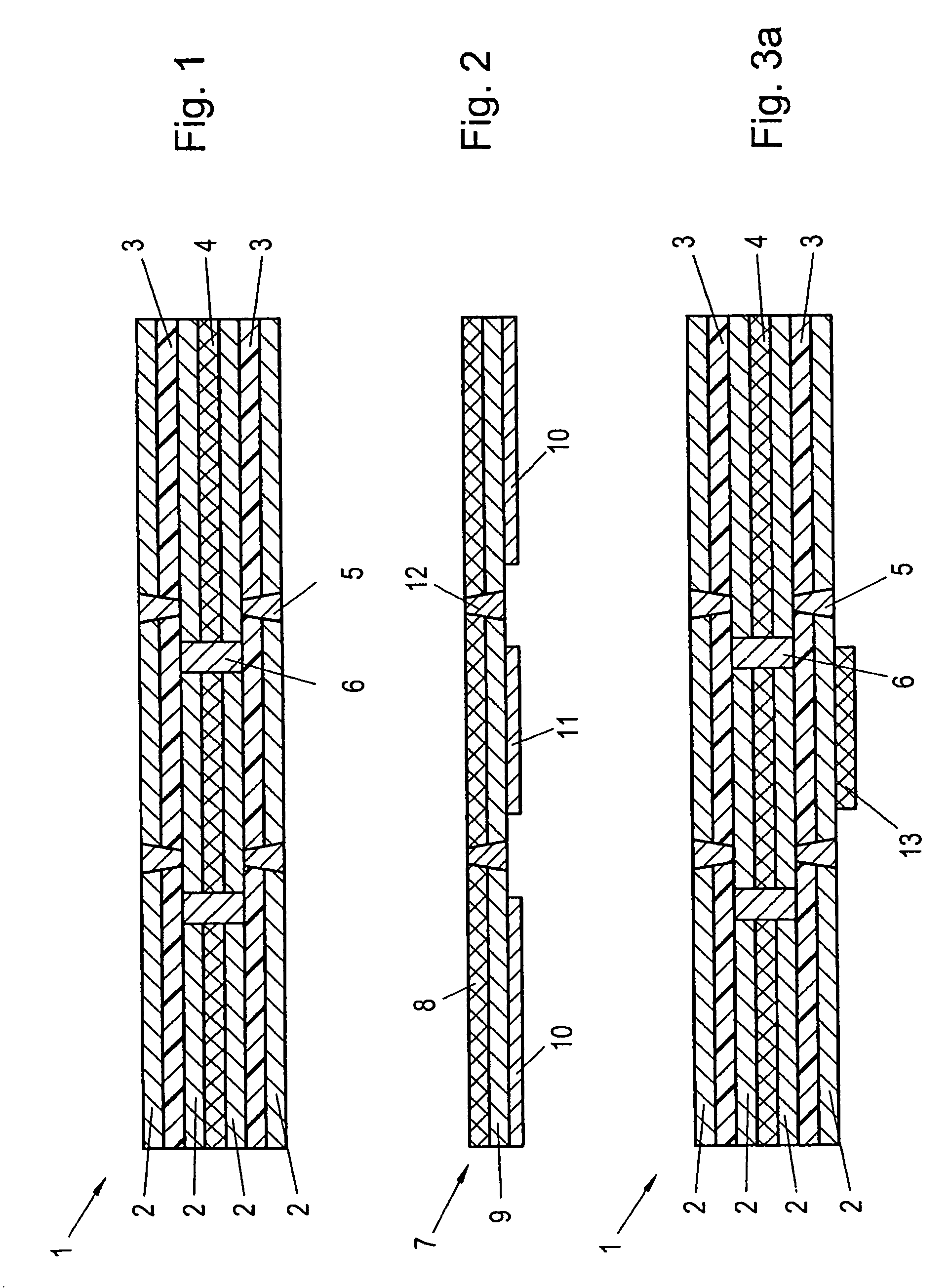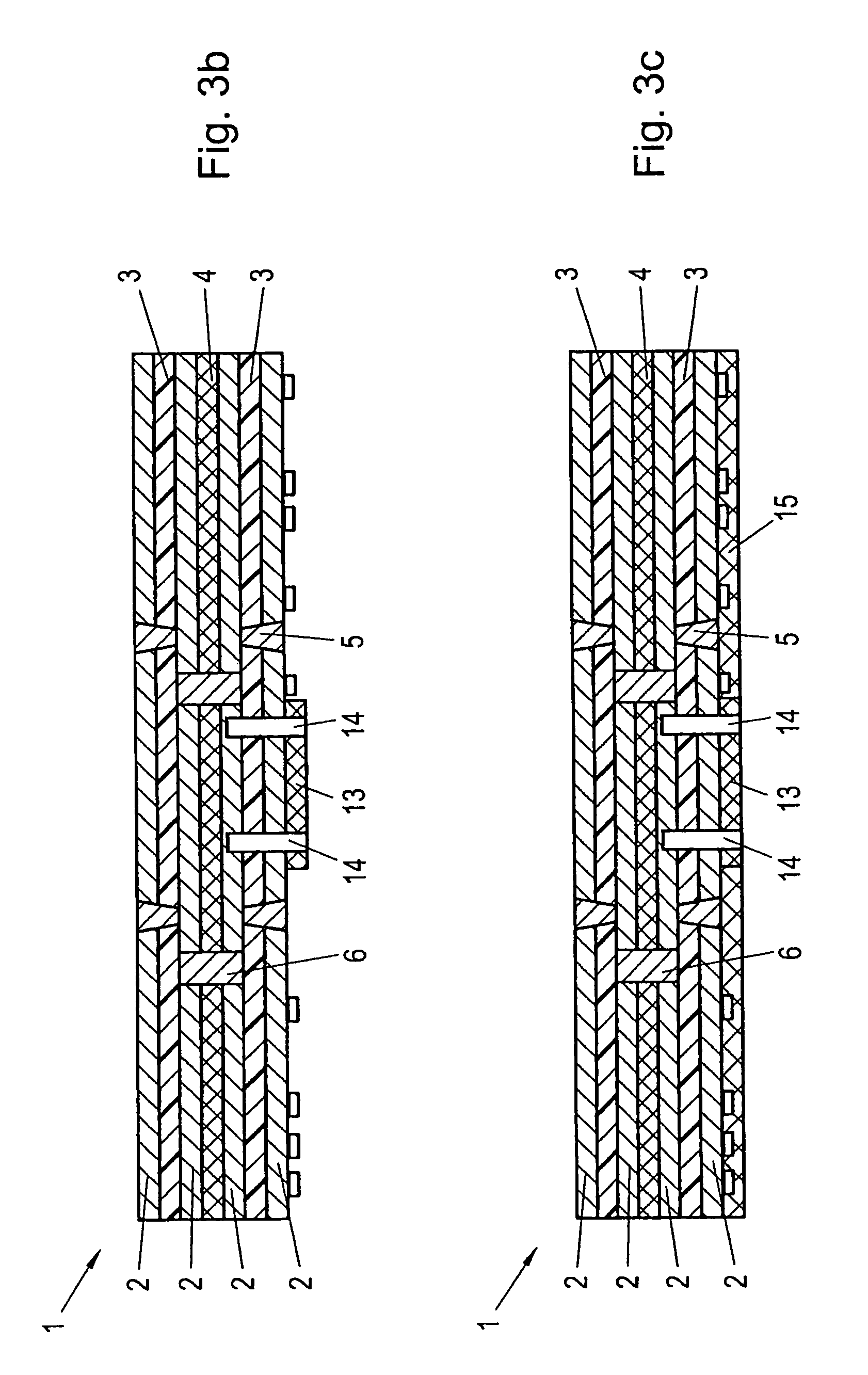Method for producing a flexi-rigid printed circuit board and flexi-rigid printed circuit board
a printed circuit board and rigid technology, applied in the direction of printed circuit aspects, electrical equipment, lamination, etc., can solve the problems of counteracting the intended miniaturization, reducing the registering accuracy required, etc., and achieve the effect of improving processing or working in further and enhancing registering accuracy
- Summary
- Abstract
- Description
- Claims
- Application Information
AI Technical Summary
Benefits of technology
Problems solved by technology
Method used
Image
Examples
Embodiment Construction
[0024]FIG. 1 is a schematic illustration of a rigid portion 1 of a rigid-flexible circuit board to be produced subsequently, said rigid portion or zone 1 being multilayered. Copper coats 2 are respectively separated from each other by a prepreg layer 3 and a core 4. Connections between the individual copper layers 2 are indicated via microvias 5 and passages 6, respectively.
[0025]FIG. 2 depicts a schematic section through a flexible portion or zone 7 of a rigid-flexible circuit board to be produced, wherein, in addition to a flexible laminate layer 8, a copper layer 9 and solder masks 10 and 11, respectively, are indicated. For a connection to be subsequently formed with subportions of the rigid portion 1 of the circuit board, which are to be connected therewith, microvias or passages 12 are indicated.
[0026]In a first method step as in accordance with FIG. 3a, a first adhesive layer 13, which will be completely cured subsequently, is selectively applied on the rigid portion of the r...
PUM
| Property | Measurement | Unit |
|---|---|---|
| thickness | aaaaa | aaaaa |
| temperatures | aaaaa | aaaaa |
| thickness | aaaaa | aaaaa |
Abstract
Description
Claims
Application Information
 Login to View More
Login to View More - R&D
- Intellectual Property
- Life Sciences
- Materials
- Tech Scout
- Unparalleled Data Quality
- Higher Quality Content
- 60% Fewer Hallucinations
Browse by: Latest US Patents, China's latest patents, Technical Efficacy Thesaurus, Application Domain, Technology Topic, Popular Technical Reports.
© 2025 PatSnap. All rights reserved.Legal|Privacy policy|Modern Slavery Act Transparency Statement|Sitemap|About US| Contact US: help@patsnap.com



